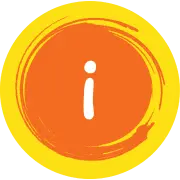English Language Arts

ELA Curriculum Overview
In grades kindergarten and up, ELA classrooms follow the workshop model, with the Units of Study curriculum as one of our resources. The workshop model provides a structure for teachers to use that allows for significant variation and helps us to put a strong focus on small group and individual teaching. In reading, whole-group lessons teach students foundational skills in phonics, vocabulary, and a deep comprehension of fiction, nonfiction, and other forms of literature. In writing, each year students complete writing projects focused on narrative, informational, and persuasive writing. The workshop structure gives significant time for students to do the real work of readers and writers and gives teachers time to tailor the instruction to the needs of small groups and individual students.
PK3, PK4 and kindergarten: The foundations of literacy
Language and literacy development are key elements of the early learning program at ITDS. In all of our early childhood classrooms, students are provided with activities and emergent literacy experiences that are tailored to fit individual students and classes, based on their needs and interests. Essential components of emergent literacy and early ELA, such as vocabulary development, phonemic/phonological awareness, knowledge of print, comprehension, and enjoyment of books are explored through developmentally appropriate practices.
In PK3 and PK4, language and literacy experiences are woven throughout the day within the classroom’s integrated topic of exploration. Teachers use Creative Curriculum as a foundational resource for instruction. Students work with teachers one-on-one and in small groups on specific skills or concepts. They are also encouraged to explore literacy independently in the classroom areas such as the writing center or library. ELA games, discussions, or songs occur during whole group times like morning meetings and read alouds.
In kindergarten, classrooms introduce the workshop model and Units of study, aligned with older grades at the school. Reading instruction takes place in whole group gatherings, independent literacy centers, small reading groups, and individual conferencing with teachers. For writing, students are supported in representing their thoughts through drawings and text. The writing process is explored both as a group and individually as students work on their ability to form letters, hear sounds in words, and express their ideas through print.
ELA 1-2
In grades 1 and 2, students grow and develop the habits and skills to become proficient lifelong readers and writers. Teachers use the workshop approach to teach whole-class reading, with ample time for student practice and targeted small group instruction using guided reading. Systematic phonics instruction, both in large and small groups, is an essential part of the curriculum and is reinforced through daily reading and writing. Through both small groups and daily read alouds, students encounter a wide variety of literature. In addition to foundational skills, first and second graders learn about the essential elements of both fiction and nonfiction.
In writing, students have experience in narrative, informational, and persuasive writing. Highlights of first grade include writing a persuasive commercial for the first-grade school store and a series of fictional narrative books featuring the same character. Second-grade highlights include How-To books and persuasive letters about favorite books.
ELA 3-4
As students grow as readers, they move into complex chapter books and nonfiction texts. As students explore a diverse range of books, lessons focus on character development. In third grade, sample units focus on character analysis and animal research projects. In fourth grade, sample units include historical fiction and extreme weather research. Student voice is a key component of our literacy program, and students work In small groups, students meet in book clubs and strategy groups to discuss books with others.
In writing, students continue to practice all genres of writing and are introduced to many traditional structures of writing projects. In third grade, students write their own nonfiction chapter books and adapted fairy tales. In fourth grade, students write literary essays and research reports on early American history.
ELA 5-6
In fifth and sixth grade, students continue to have choice in their reading, beginning studies of genres such as fantasy and realistic fiction. In addition, teachers engage students in close reading through choice whole-class novels, short stories, and poems. Texts include Wonder (RJ Palacio) in 5th grade and Ghost (Jason Reynolds) in 6th grade. Students continue to meet in book clubs and strategy groups that target important literacy skills.
In writing, students continue to write in all genres, developing an increasingly sophisticated grasp of text structures and writing craft. Highlights include historical research reports and research-based information reports in sixth grade.
ELA 7-8
7th and 8th-grade students continue to develop their reading and writing skills through the workshop model, which is particularly engaging for students at this age as they continue to form book clubs and peer-edit their work. 7th graders explore character studies, refine their research skills, and work on graphic novels, realistic fiction, and research-based essays. 8th graders explore the genre of dystopian literature and contemporary fiction and write memoirs, position papers, and a literary essay. In addition to a wide variety of independent and book club reading, 7th and 8th graders read several whole-class texts each year, covering a variety of genres.
As students end their time at ITDS, major components of the 8th grade ELA curriculum include preparation of substantial high school applications, through which they write essays and improve their interview skills. The 8th-grade curriculum also includes work on their 8th-grade portfolio, in which students select, reflect upon, and defend their portfolios as a promotion requirement.
